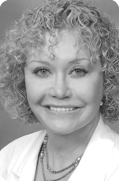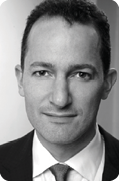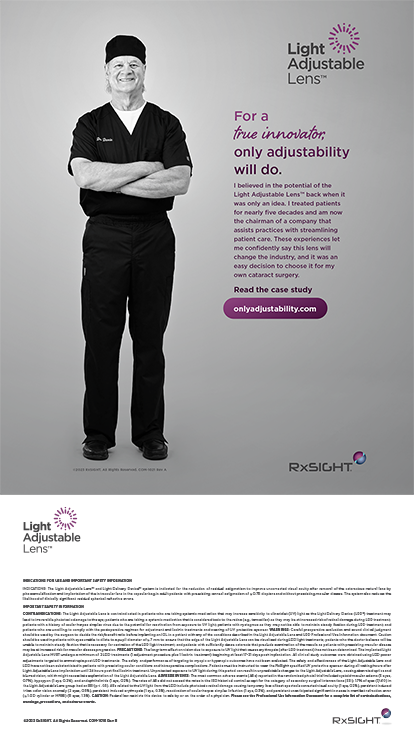Communication Styles
By Damien F. Goldberg, MD

Today, it is rare to find an ophthalmic practice that does not have a website or a Facebook page. Although medical professionals’ personal use of social media is widespread, studies suggest that they use these networks only 65% of the time for work-related purposes.1 I would venture to say that social media use among ophthalmologists is higher; we have come to realize that these sites not only assist with our own education but also our search engine optimization.
WHO USES WHAT?
Misconceptions to the contrary, millennials are not the only generation taking advantage of digital outlets. In my experience, cataract surgery patients are avid users of the Internet, and they check their Facebook pages to see what their children and grandchildren are doing. Although they generally have not adopted Twitter or Instagram, that transition may just be a matter of time.
MARKETING
Digital efforts can be a positive force on a practice’s outreach and marketing programs, but do patients really choose me to perform their cataract surgery because of my practice’s flashy website rather than my reputation as a surgeon?
An important caveat is that whatever we put on the Web is out there forever for everyone to see. We must be careful about what we post. One survey reported that 56% of medical boards have restricted, suspended, or revoked at least one physician’s license for online missteps.2
Several factors may influence how a practice approaches digital marketing. For example, one with an excellent optometric referral base may not need to spend much time and money on marketing to patients via social media. For a practice that wants to promote something new or that does not have a strong referral network, digital marketing may be an important strategy worth about 20% of the budget.
THE PERSONAL TOUCH
Maintaining an online presence is important but less so than building long-term relationships with patients. Personal contact therefore remains essential. Choosing a surgeon is not like visiting truecar.com and trying to get a discount. In ophthalmology, reputation is king. Word of mouth brings patients to a practice. They are familiar with terms like LASIK and premium IOLs, but they want to discuss the nitty-gritty of surgery with a physician.
My practice combines old- and new-school approaches to patients. An example of the former is that I like to send patients thank you notes and mailers. A millennial approach my practice prioritizes is maintaining our presence on Yelp and healthgrades.com.
1. Ventola CL. Social media and health care professionals: benefits, risks, and best practices. P T. 2014;39(7):491-499, 520.
2. Greysen SR, Chretien KC, Kind T, et al. Physician violations of online professionalism and disciplinary actions: a national survey of state medical boards. JAMA. 2012;307(11):1141-1142.
Study, Strategy, and Subtlety
by Cynthia Matossian, MD

Cataract and refractive surgeons’ practices span the generations. Engaging multiple age groups concurrently takes study, strategy, and subtlety.
DO YOUR RESEARCH
It is imperative to stay abreast of the constantly changing trends in marketing technology and demographics. When I read or hear about something new in this area, I forward the information to my in-house marketing team. They research the concept and share their opinions on its likelihood of success with our patient population.
For example, while attending the ME Live Event in Hollywood, California, last year, I heard that Instagram and Snapchat are essential for reaching the millennial demographic, and I instructed my marketing team to implement campaigns using these apps.
A WELL-THOUGHT-OUT AND FLEXIBLE GAME PLAN IS A MUST
When designing an overall marketing plan, my staff and I take many factors into consideration. We monitor internal reports to ascertain the effectiveness of our marketing efforts and then adjust our strategies accordingly. We analyze the services we provide and the required patient demographics for the success of those services; consequently, we may choose to ramp up our efforts or redesign our strategy to appeal to a specific group. For instance, we will not attract millennials for more contact lens fittings by promoting cataract services on social media. Instead, we use digital platforms to promote services that benefit the younger population such as contact lenses and dry eye treatments. Dry eye disease is becoming prevalent among these patients owing to the ubiquity of digital devices.

Figure. Marketing Coordinator Dan Rue was at ECHO’s Annual Octoberfest & Senior Information Fair.
My practice emphasizes community involvement. My marketing team is very active in the communities surrounding all of our offices, which gives us opportunities to interact with older patients. Community events are an additional way of staying in touch with existing patients outside the office setting (Figure). We receive positive feedback from established patients when they see us at health fairs, team wellness days, local festivals, and public educational lectures; they are proud to say to their friends, “That’s my eye doctor!” This strategy has also helped us attract new patients. People have commented to us that they do not see their own eye doctors engaging the community in this way.
We use many marketing formats to reach as many population segments as possible. From press releases in the local media to educational blogs on our website to digital newsletters to our patients, we strive to keep our brand and the quality of our diverse services at the forefront of people’s minds.
IT TAKES A BOLD MOVE WITH A LIGHT TOUCH
In addition to research and flexibility, we have found it vital to approach marketing changes with some subtlety. We constantly monitor our efforts. When we occasionally find that one of our marketing methods is underperforming, we then decide how best to address the situation. For example, when we faced a drop in subscribers from our weekly e-blasts, we began sending the same amount of information in one monthly e-newsletter (http://bit.ly/1NLCldq). This change had an immediate, positive effect on the number of people unsubscribing.
CONCLUSION
The field of ophthalmology cares for the young and the old, women and men. A successful practice keeps up with changes in demographics, technology, and taste. Agility and responsiveness in long- and short-term marketing strategies are key. My staff and I strive to make bold moves to attract new people without alienating loyal patients.
We Are Not Different Species
By Marguerite MDonald, MD

I do not think that we cataract and refractive surgeons have to target the generations as if they were different species, because basic human needs do not change. All patients want to feel respected and fully informed. Word of mouth is and will always be critical to patients’ decision-making process. That said, the ways in which a practice attracts each generation and how these individuals process information and make decisions about elective surgery differ substantially.
BABY BOOMERS
Baby boomers are now too old for LASIK and are pursuing cataract surgery in increasing numbers. In my experience, they respond to traditional marketing: radio, television, print, websites, and—most of all—word of mouth. These patients make decisions fairly quickly and independently. The marketing techniques that worked so effectively 10 to 20 years ago to bring boomers into my practice for LASIK now work to get them in for cataract surgery.
GENERATION X
Also known as the MTV generation and the connected generation, generation X was born between the mid-1960s and 1976 to 1980, depending on the source consulted. Gen Xers number approximately 60 million. They are more diverse than previous generations in terms of race, class, sexual orientation, religion, and ethnicity. They have the highest educational levels and are more likely to be children of divorced parents than previous generations. Because of more women in the workforce, gen Xers make more money than their parents did at their age, but they have less wealth.1
Gen Xers generally like mobile technology, flexibility, freedom, and independence. In my experience, the best ways to market an ophthalmic practice to these patients are to be clear about what the practice is offering (lots of details), to celebrate their diversity, and to give suggestions rather than rules.
How exactly, however, should we cataract and refractive surgeons market our practices to generation X? This is a challenging question to answer because their media consumption is so fragmented: mobile devices, gaming, satellite radio, online surfing, iPods (Apple), and other digital music channels. One effective option is direct mail. In a 2005 study by the US Postal Service, 86% of gen Xers brought in the mail the day it was delivered, and they rated 75% of the mail they received as valuable. Moreover, 74% of generation X direct mail readers read retail advertising received by mail.2
A second effective marketing medium for this demographic is the Internet. More than any other generation, generation X likes to conduct research while shopping online. They read more reviews and visit more opinion sites.3 It is therefore a good idea to ramp up our practices’ presence on Yelp and other opinion websites and to use keyword search engine advertising.
MILLENNIALS
Millennials are the offspring of the baby boomers. As children, the former had most of their waking hours scheduled for them (tennis lessons, piano lessons, play dates, etc.), and they spent very little time alone. They therefore tend to be most comfortable in groups.4,5
The millennials are not influenced by traditional marketing; instead, they are reached primarily through social media and word of mouth from friends. Millennials internalize information from trusted sources, often obtained at group events like the Lollapalooza festival.6 In my experience, they prefer to have at least one friend or relative present for the consultation. My practice therefore encourages these patients to bring others along, makes them all comfortable (sufficient seating, drinks, and snacks), and provides information to everyone who will influence each patient’s decision.
ACROSS GENERATIONS
In my practice, the technology presentation/informed consent is basically the same for all generations: a brief presentation of all the options followed by a strong recommendation for the one I think is best for that individual and an explanation of why. I truthfully discuss pros and cons, possible complications and their management, and the details of what to expect after surgery. I believe the surgeon should present all of this information. The conversation can be shortened by sending materials in advance (via snail mail or digitally) to the patient and by having counselors/surgical coordinators on hand to schedule the procedure and answer questions (“Mary/Joe will schedule the surgery, give you your prescriptions, and review the financing details”).
When educating patients on technology, I avoid using brand names. Patients do not care which laser cataract system I use, for example. They want to know that I use FDA-approved technology with a great track record and that I believe in it.
1. Smith N. Generation X earns more but has less. BloombergView. Published July 10, 2015. http://bv.ms/21fiM4L. Accessed April 27, 2016.
2. National study concludes generations X and Y value mail. PR Newswire. October 20, 2005. http://prn.to/1WpVpEW. Accessed April 27, 2016.
3. Kile L. Gen X: stuck in the middle. CRM Magazine. Published February 2012. http://bit.ly/1qTT2hs. Accessed April 27, 2016.
4. Armour S. Generation Y: they’ve arrived at work with a new attitude. USA Today. Updated November 8, 2005. http://usat.ly/1VCiRQp. Accessed April 27, 2016.
5. Deloitte Consulting. Who are the millennials a.k.a. generation Y? 2005. http://bit.ly/243bciS. Accessed April 27, 2016.
6. Mahdavi S. Future growth in LASIK: understanding and reaching generation Y. February 2012. http://bit.ly/21fkset. Accessed April 27, 2016.
Across the Technological Divide
by Tal Raviv, MD

As a gen X ophthalmologist in private practice in Manhattan, I have thought a lot about how to appeal to the generations of patients I face. Most corporate brands use what is called segmentation, a marketing strategy whereby subsets of consumers (based on age, socioeconomic status, etc.) are identified and then uniquely targeted with messaging. For example, Starwood Hotels and Resorts Worldwide has the St. Regis, W, and Aloft brands (along with many others) to appeal widely to all travelers. In ophthalmology, one physical practice generally must suit all patients, but communication can and should be tailored.

Figure. New patients skip the paper intake forms and register with Dr. Raviv’s practice digitally using technology from Yosi.
At the Eye Center of New York, we try to address the different generational needs from the pre-encounter engagement through the office visit to postvisit communication by being attentive to our patients’ expectations. We find that one of the biggest intergenerational differences lies in the digital divide, with millennials using their smartphones almost exclusively for all communication (except talking, which they shun) and older generations representing a continuum from tech savvy to technophobia. A successful modern practice must have options for all patients. Our staff is trained to ascertain where on the digital continuum each patient’s comfort level lies.
INTERNET PRESENCE AS A FOUNDATION
The practice’s Internet presence is mission critical. This is especially true in ophthalmology, where many patients refer themselves. Appealing to the younger generations and even a growing number of baby boomers requires designing a top-notch website, paying attention to MD rating sites, and curating all searchable results of the practice’s doctors.
As research, I have assumed the role of the consumer and searched a few dermatologists’ and dentists’ websites to see the stark differences in quality among them. A poorly designed or nonexistent website will be a deal breaker for many millennials. Website design trends shift every couple of years, if not more often, and a practice needs to keep up. Nowadays, a responsive, flat-designed, mobile-first website is in vogue. Beyond that, the site should be interactive, allowing for smartphone-based appointments, payments, and intake form registration. (I have written about the technologies we use in my past few articles for CRST’s sister publication MillennialEye.1-3)
I believe social media can be helpful but only if it is authentic. Millennials easily sniff out social media posts that are automated or outsourced to a third party, negating their benefit. In my opinion, traditional tweets from medical practices like “May is healthy vision month” are unlikely to generate social media buzz or activity. Maintaining an active presence on social networks, however, is generally thought to raise a practice’s organic search result rankings.
BEFORE THE VISIT
When patients call the office, our staff quickly characterizes them by asking if they would like an information packet sent via postal mail or email. If an email address is obtained, then we proceed down the digital pathway.
For example, we use technology from Yosi to engage patients from their first phone call or online appointment request with the practice. Using a web-based dashboard, our receptionist sends a confirmatory text message to the patient listing the time and date of the appointment. A link provided allows him or her to fill out the practice intake forms right on a smartphone prior to the visit. People today are used to getting digital confirmations from hotels, car rental agencies, and restaurants. I believe the same should be true for medical visits.
DURING THE VISIT
For new patient registration, our staff hands patients an iPad (Apple) with the Yosi intake app (Yosi). If they hesitate, patients are offered the traditional clipboard and papers instead. With Yosi technology, most generations of our patients can register themselves in less than a few minutes (if they have not done so before their visit) by snapping a photograph of their insurance card and driver’s license, after which the app automatically fills in their information (Figure).
Similarly, we provide educational materials to patients digitally or in print—sometimes both. For cataract evaluations, we have been using the mobile health care platform CheckedUp (iDoc) in the office to educate patients about their options. We have big-screen LCD televisions in the exam lanes that are used to show patients images of their anatomy, and we have been demoing Eyemaginations’ new feature, Exam Mode, to illustrate disease concepts.
AFTER THE VISIT
We frequently send surgical patients home with printed materials and email educational material. The latter message includes a beautiful, relevant Eyemaginations video and a link to the practice’s website for more specific information. CheckedUp also allows us to resend the educational content they watched in the office.
Patients’ communication preferences are recorded in our practice management system, and reminders for follow-up visits are done by text, email, or phone.
Using the newest digital technologies engages our gen X and millennial patients. Our technophobic patients are still happy to receive the phone calls and print materials to which they are accustomed. A prime benefit of technology is that it frees our reception personnel from rote intake work and routine phone appointments. Instead, they can concentrate on providing the utmost in personalized high-touch service, something that all generations value equally.
1. Raviv T. Online invoicing for private-pay procedures. MillennialEye. January/February 2016. http://millennialeye.com/articles/2016-jan-feb/online-invoicing-for-private-pay-procedures/. Accessed April 19, 2016.
2. Raviv T. Hot topics: online payments for your practice. MillennialEye. November/December 2015. http://millennialeye.com/articles/2015-nov-dec/hot-topics-online-payments-for-your-practice/. Accessed April 19, 2016.
3. Raviv T. Must-have apps for the millennial. MillennialEye. March/April 2015. http://millennialeye.com/articles/2015-mar-apr/must-have-apps-for-the-millennial/. Accessed April 19, 2016.
Matching the Patient’s Voice
by Vance Thompson, MD

The things that drew my attention when I was 20 years old are not the same as what attracts it today. How people consume and interact with media changes as they age, and so do their surgical options for vision correction. I would make very different recommendations to a patient in his or her 20s versus his or her 50s. Other demographics certainly factor in as well, and the way in which options are presented is almost as important as the procedures themselves.
SEGMENTING
At Vance Thompson Vision, we are mindful of patients’ habits. We monitor how and where they consume media and how they interact with the various types of marketing. Laser vision correction messaging, for example, is typically directed towards potential patient customers in their 20s to early 40s. Rarely would we place an advertisement for this offering in the local newspaper, whereas this medium might be appropriate for targeting individuals interested in refractive cataract surgery.

Figure. Stages of lenticular dysfunction. Abbreviations: RLE, refractive lens exchange; DLR, dysfunctional lens replacement.
SPANNING GENERATIONS AND MEDIA
We have had great success in segmenting our marketing strategies based on whom we want to reach. Exciting developments of the past few years, however, challenge this mode of thinking. For example, the options for presbyopic correction span patients ranging in age from their 30s into their 50s. In order to reach both markets, messaging needs to reach people just over 40 years of age (ie, more typical social medial messaging) and those who are 50+ years of age (ie, more traditional print messaging). Our center also offers a variety of seminars on our surgical offerings that were extremely successful in the early days of LASIK but that are also relevant for today’s offerings.
A message about reading glasses via several media types could help flag prospects across multiple age groups (Figure). It is important to keep a message consistent across the various media while ensuring it is appropriate for each particular medium used. Messages must also be consistent with the practice’s brand. Social media allows us to use more photography and videos, whereas print requires a more static message.
CONCLUSION
We have found success in using a variety of media and focusing on the specific patient customer with each medium we implement. The keys are to keep in mind who the customer is and how he or she communicates. By matching the patient’s voice, we find a way to engage him or her that goes beyond messaging to become a relationship that he or she will want to pursue.
Technology and the Surgeon
By Dan B. Tran, MD

The complexity of ophthalmic practice has increased in the past few years, thanks in part to the fast pace of technological advances but, more importantly, owing to generational differences in the patient population. Refractive surgery is no longer just LASIK and PRK. Advances in IOL technology, laser cataract surgery, intraoperative aberrometry, and improved image registration allow ophthalmologists to perform refractive cataract surgery.
CATERING TO TWO GROUPS
The two main generations in my practice are the baby boomers and the millennials. Our practice does not have a specific program to target patients by their generation using direct-to-consumer marketing. We work mostly with referral optometrists and primary care physicians. Our office’s appearance is designed to be comfortable for both generations. That said, we have two separate patient-counseling teams—one for LASIK and one for cataract—because these patients require different levels of expertise with minimal overlap. I believe that word of mouth from the two generations is synergistic in increasing surgeons’ credibility.
INFRASTRUCTURE AND PERSONALIZATION
To my mind, it is possible to design a practice for patients of all ages as long as the physical infrastructure is adequate to allow efficient flow instead of congestion. A key element is for the staff to provide personal attention to each patient. Education is the main focus of our practice.
TECHNOLOGY
Having the latest, proven, safe technology is a requirement for a successful multigenerational practice. That said, I believe that patients come to see my colleagues and me for our surgical skills, reputation, and trustworthiness—not just our practice’s technology.
We do not disparage old technology, and we discuss new offerings only in the context of how they will benefit patients. We never promote one technology as safer than another, because safety is in the hands of the surgeons, not the technology.
We use statistics (published and internal data) to discuss surgical outcomes. We discuss a technology when patients ask questions about it or if we think that a product is particularly useful to manage the patient’s condition (eg, intraoperative aberrometry for post-LASIK patients with cataracts). Our goal is to educate patients on how a given technology could be of benefit without trying to sell them on the technology itself.
THE SURGEON’S ROLE
I believe that the surgeon should be the main educator, because he or she knows best how the technology works and how it will benefit the patient. The surgeon should provide a personalized educational message to patients and choose the best option for each individual during the consultation process. This approach builds trust between the surgeon and the patient. The staff can reinforce the message later and answer any questions.
Damien F. Goldberg, MD
• private practice, Wolstan & Goldberg Eye Associates, Torrance, California
• (310) 543-2611; goldbed@hotmail.com; Twitter @damiengoldberg1
Cynthia Matossian, MD
• owner, founder, and chief medical officer, Matossian Eye Associates, with locations in Pennington and Hamilton, New Jersey, and Doylestown, Pennsylvania
• cmatossian@matossianeye.com
Marguerite McDonald, MD
• cornea/refractive specialist with Ophthalmic Consultants of Long Island, New York
• clinical professor of ophthalmology, NYU School of Medicine, New York
• adjunct clinical professor of ophthalmology, Tulane University Health Sciences Center, New Orleans
• (516) 593-7709; margueritemcdmd@aol.com
Tal Raviv, MD
• founder and medical director, Eye Center of New York
• clinical associate professor of ophthalmology, New York Eye and Ear Infirmary of Mount Sinai, New York
• (212) 889-3550; talraviv@eyecenterofny.com; Twitter @TalRavivMD
• financial disclosure: an investor in Yosi
Vance Thompson, MD
• director of cataract and refractive surgery, Vance Thompson Vision, Sioux Falls, South Dakota
• (605) 361-3937; vancethompsonvision.com; Twitter @vthompsonvision
Dan B. Tran, MD
• medical director and founder, Coastal Vision Medical Group, with locations in Irvine, Long Beach, and Orange, California
• danbtran@gmail.com; www.coastalvisionmedical.com


